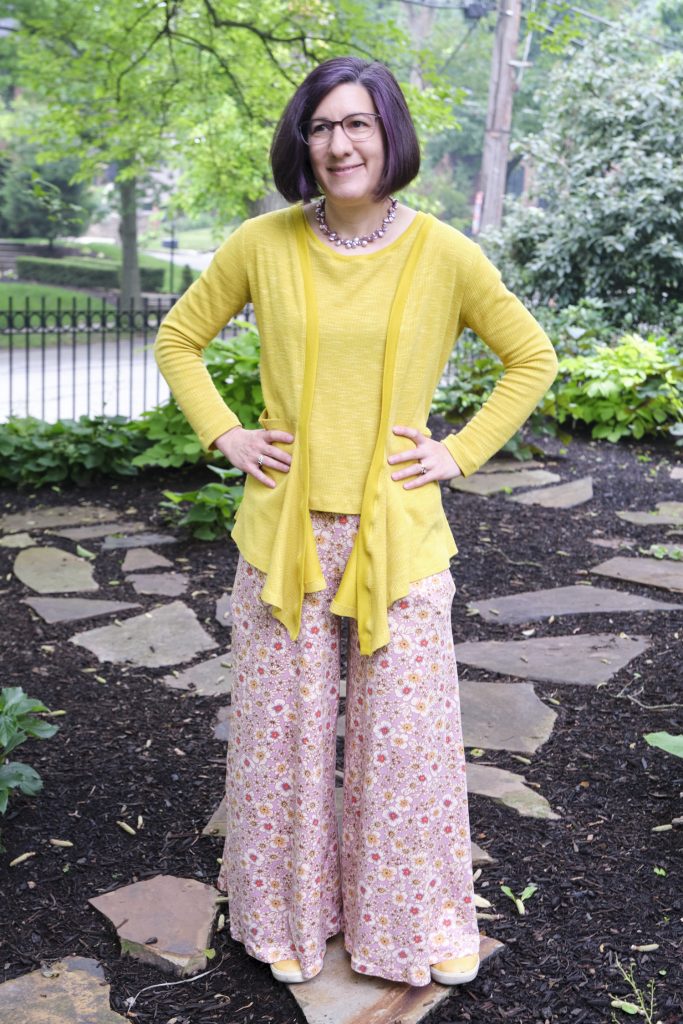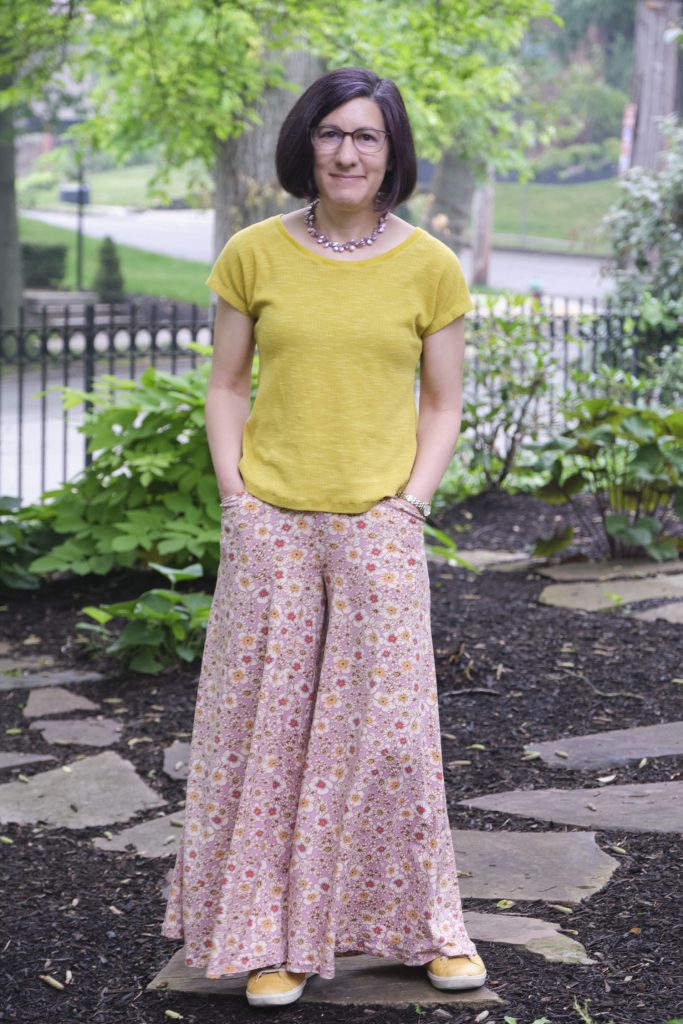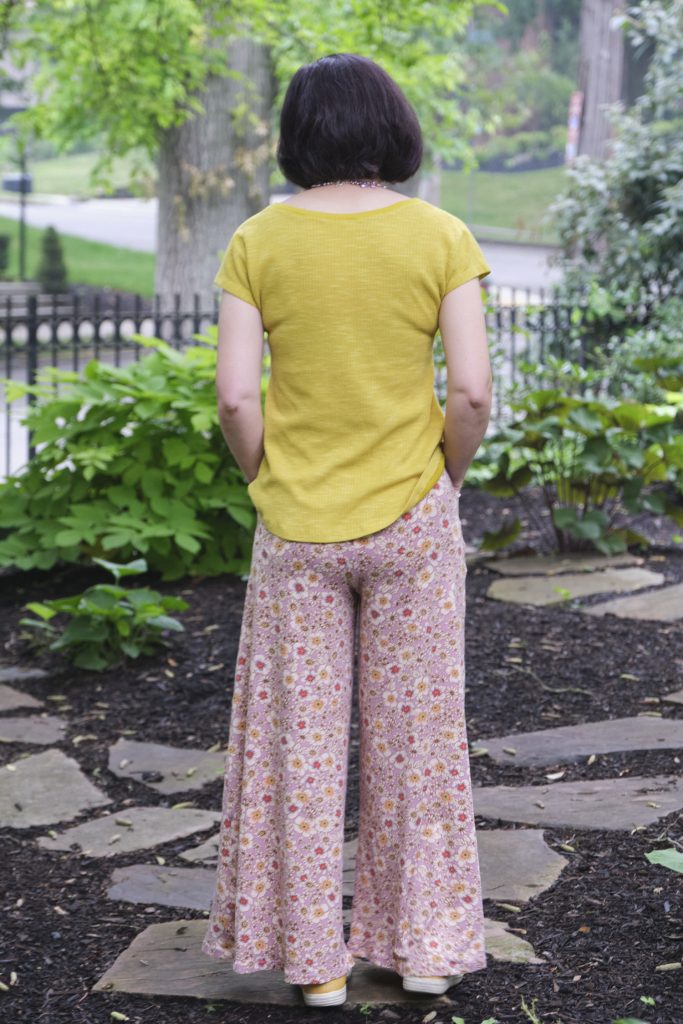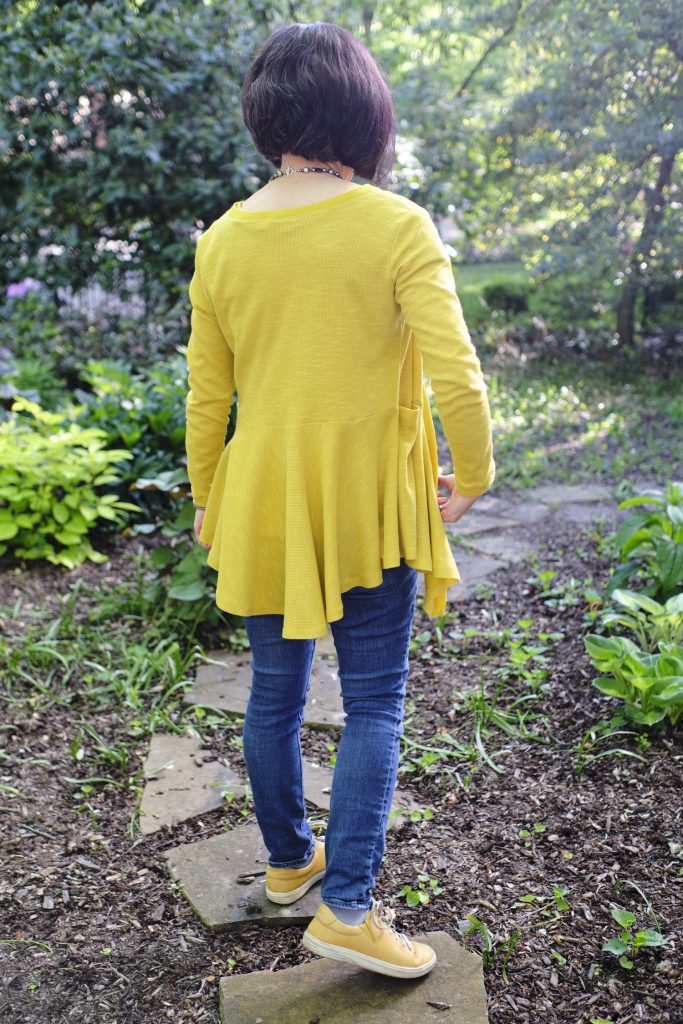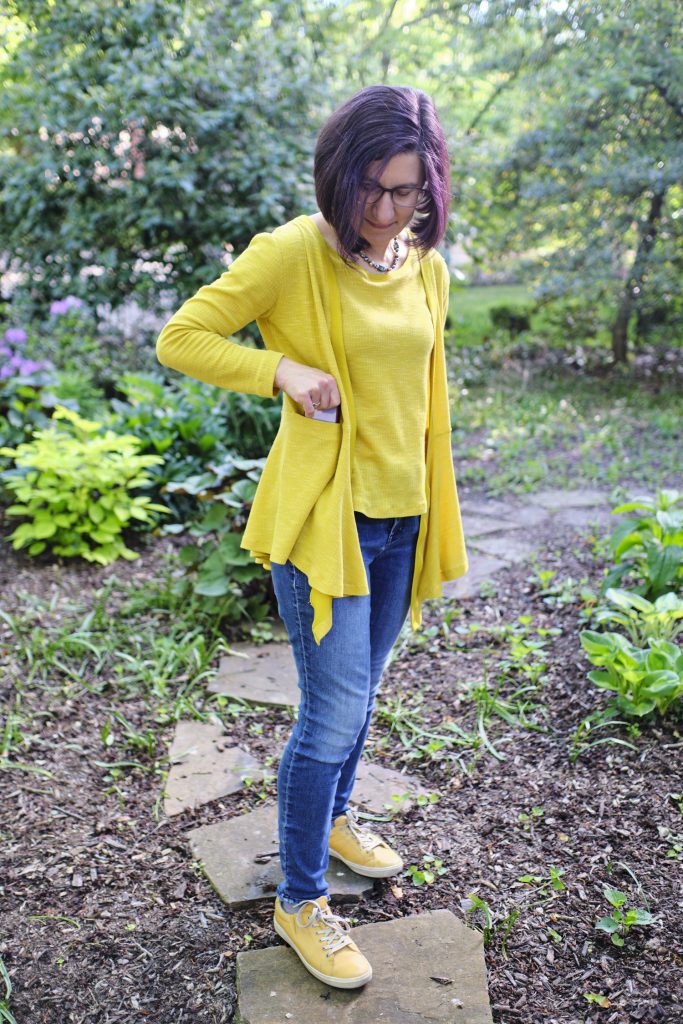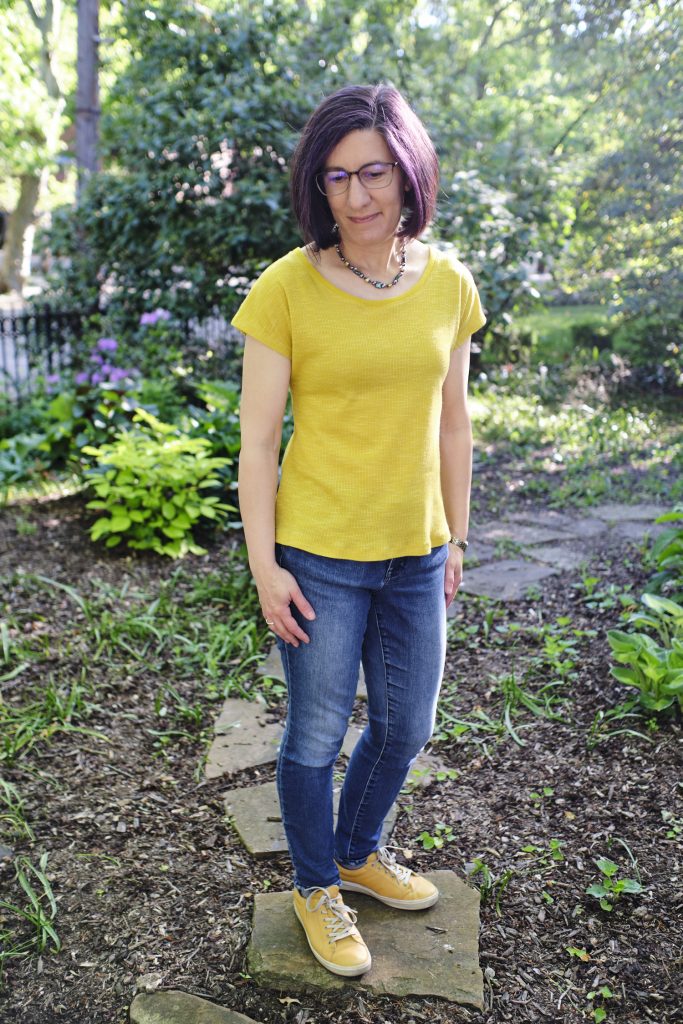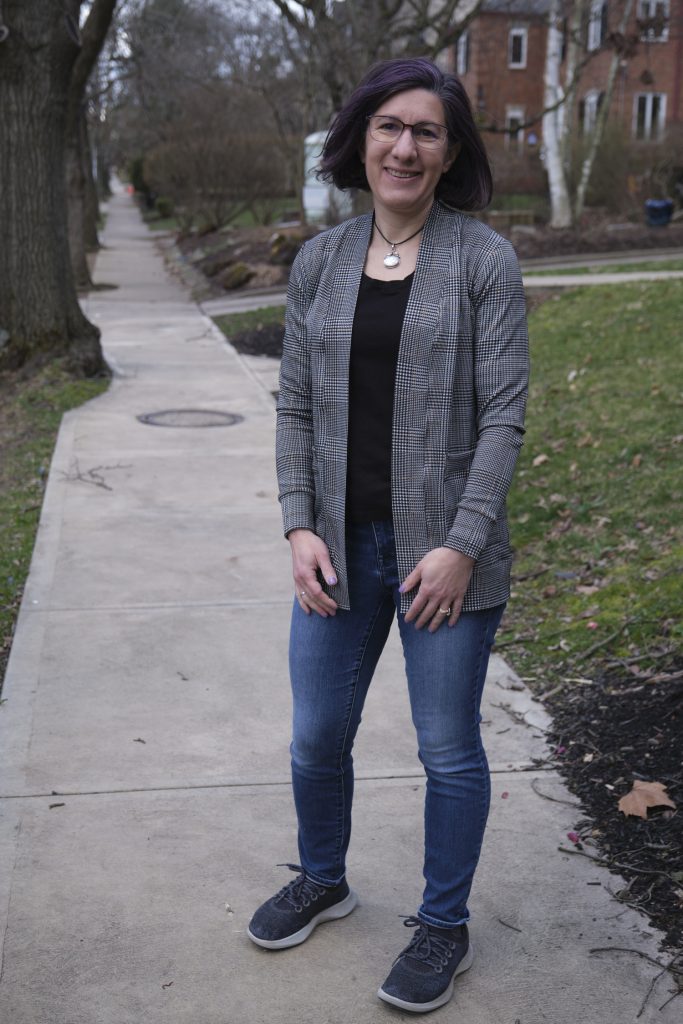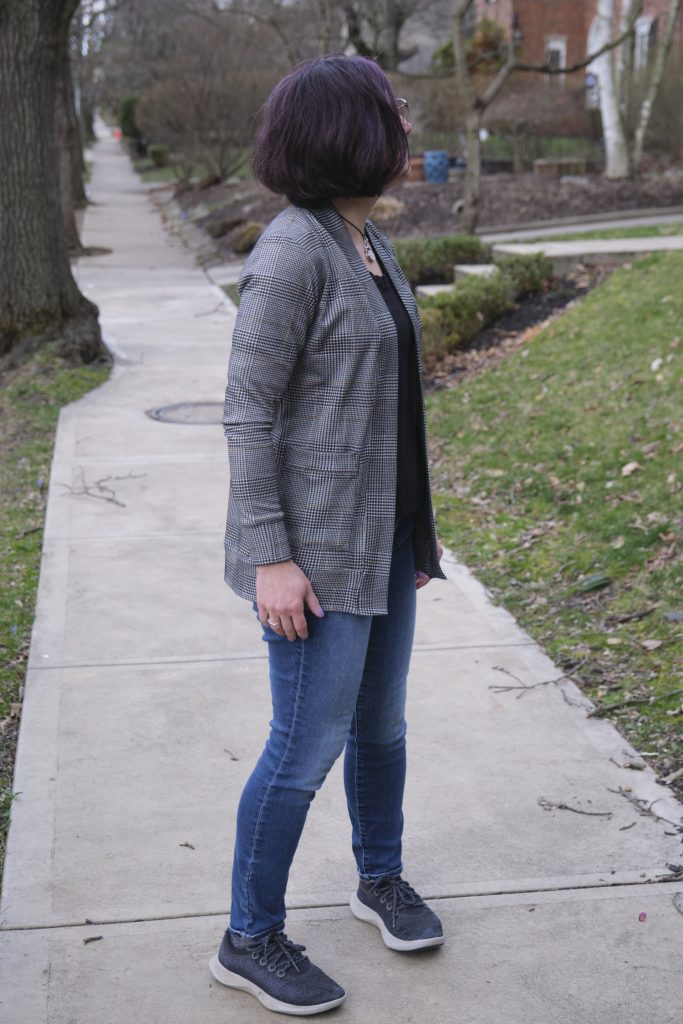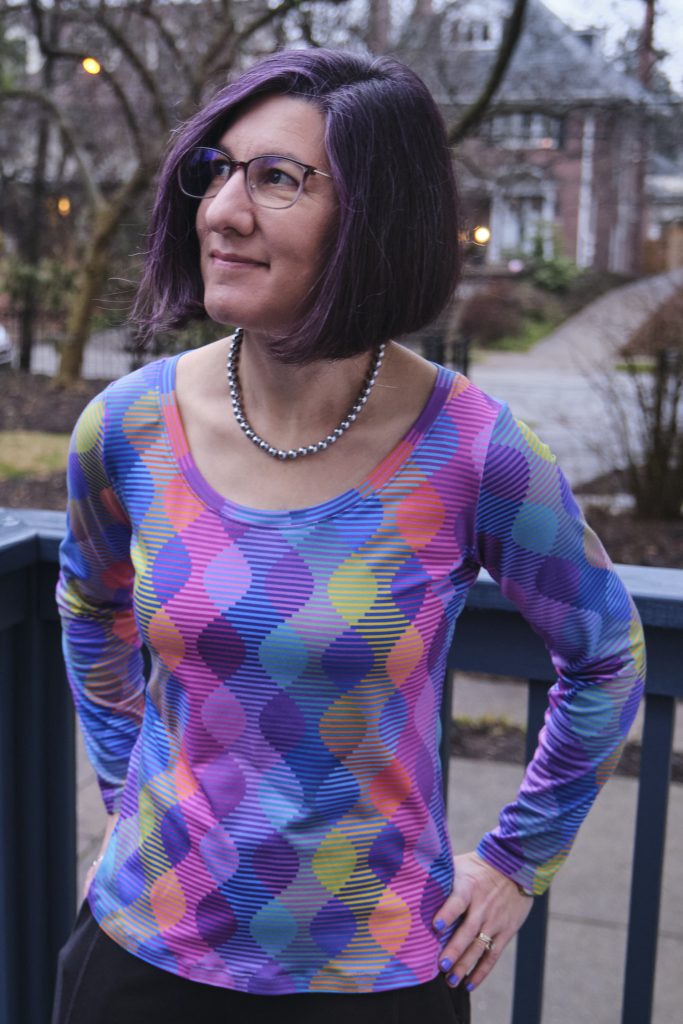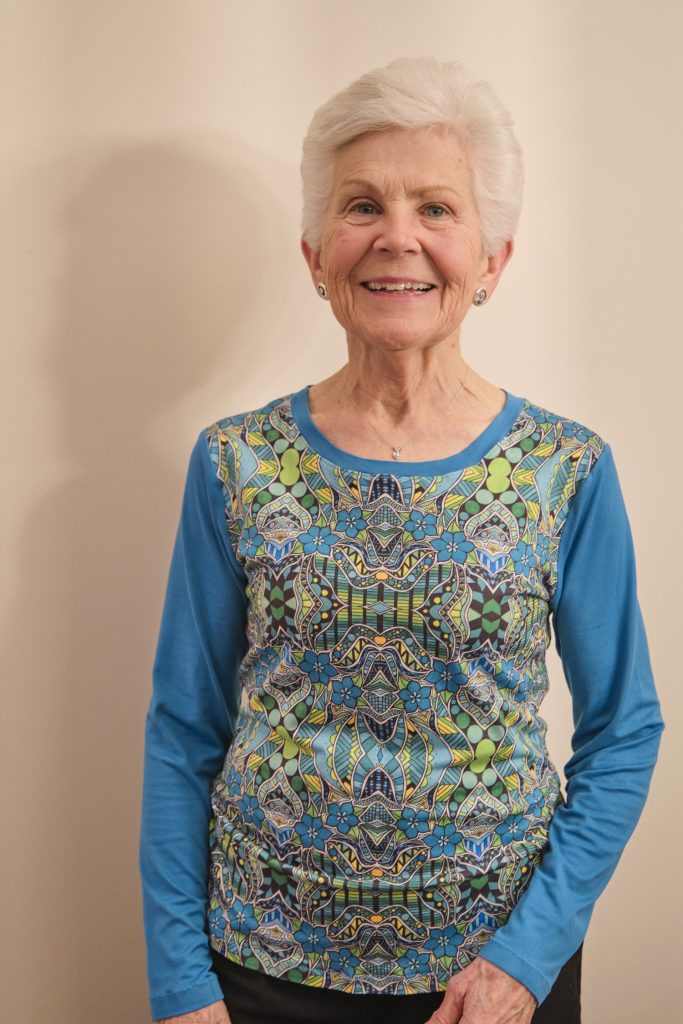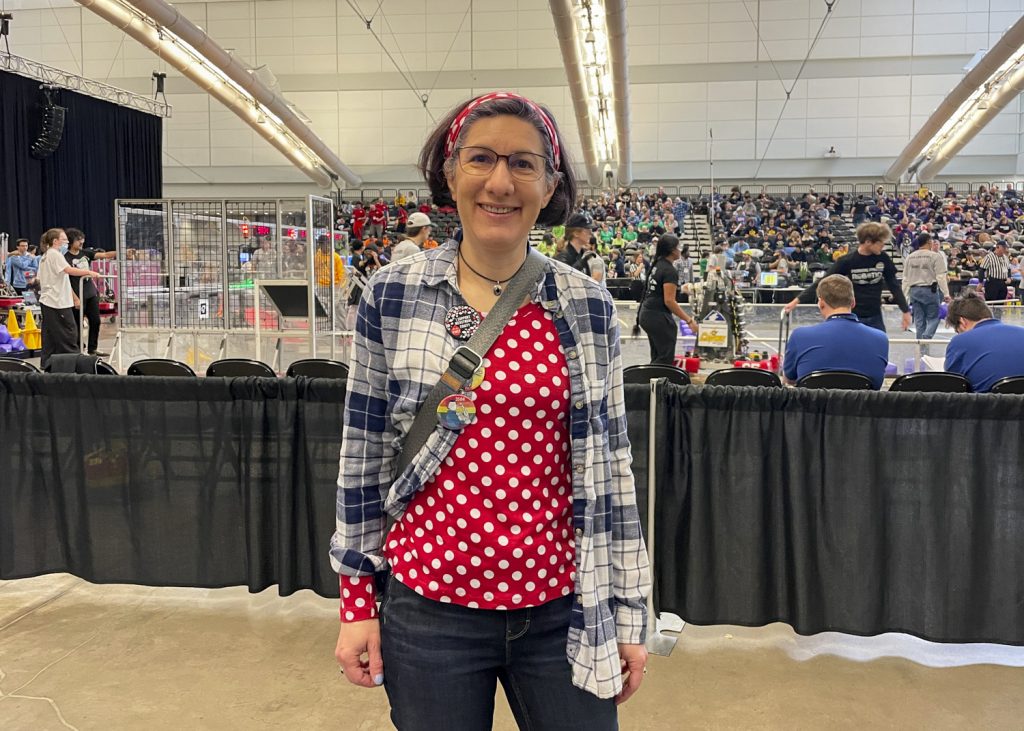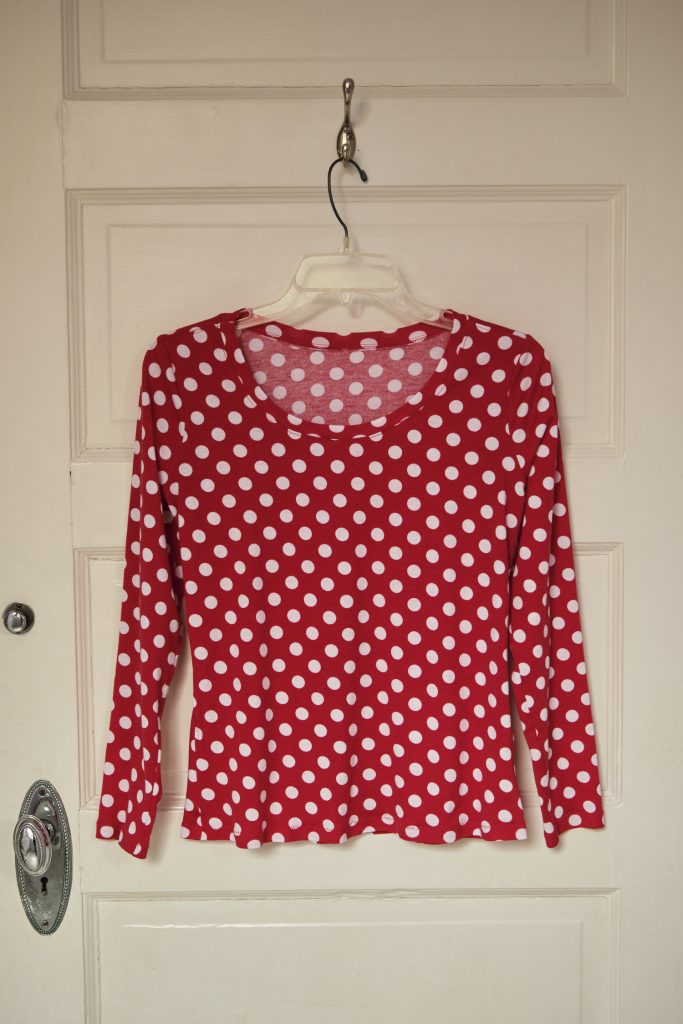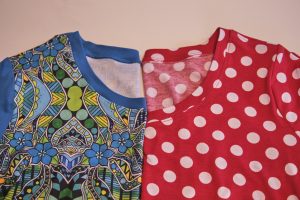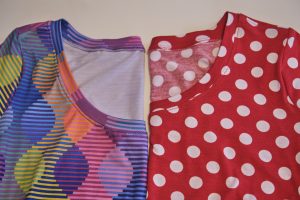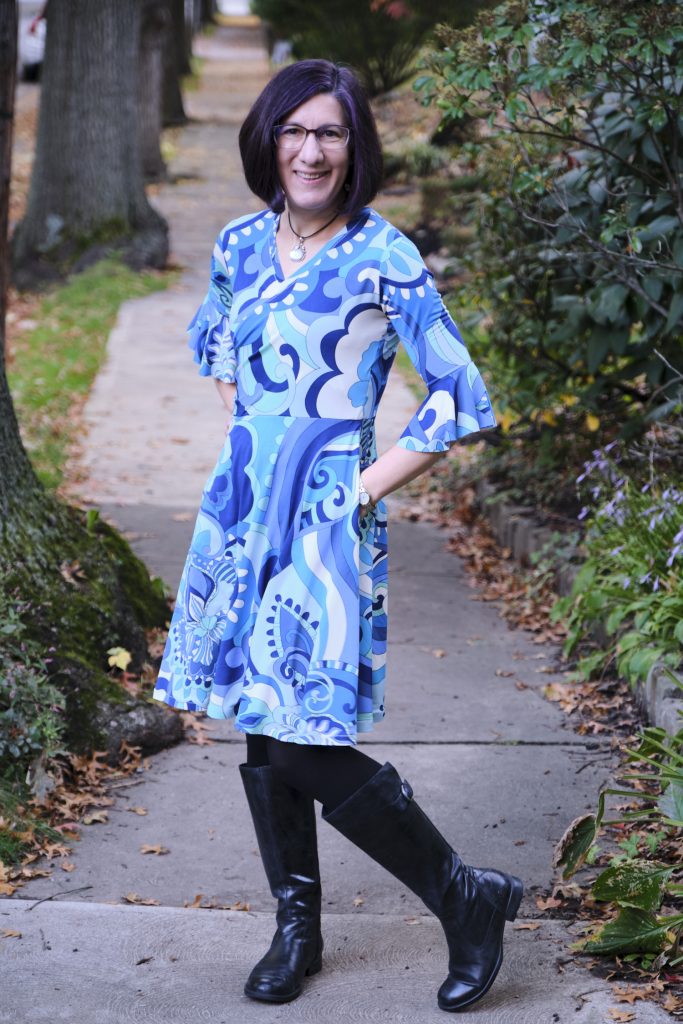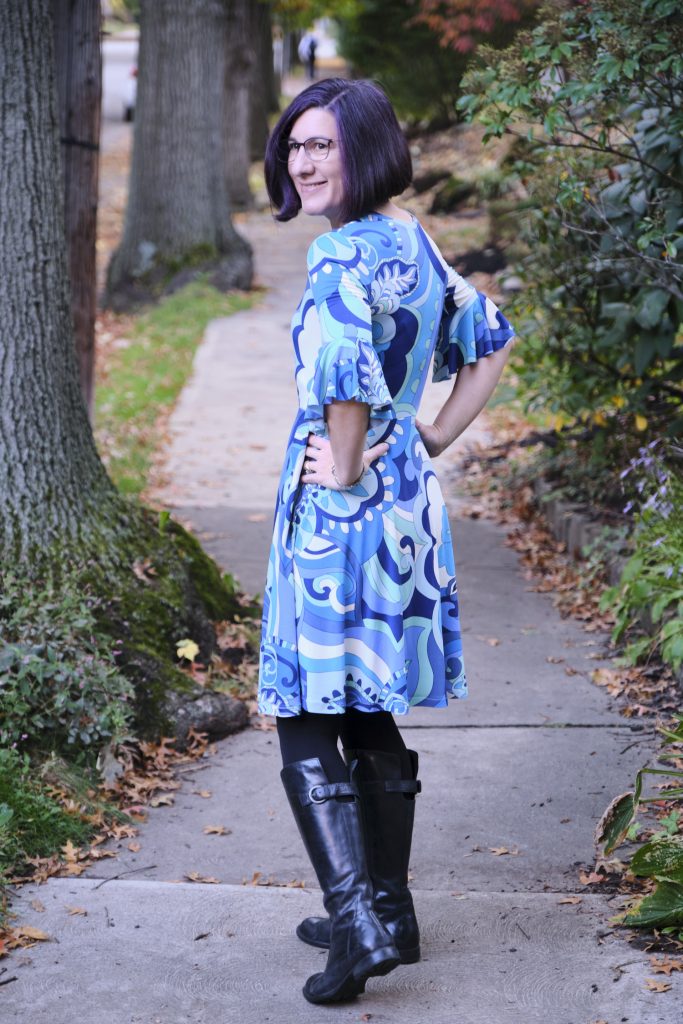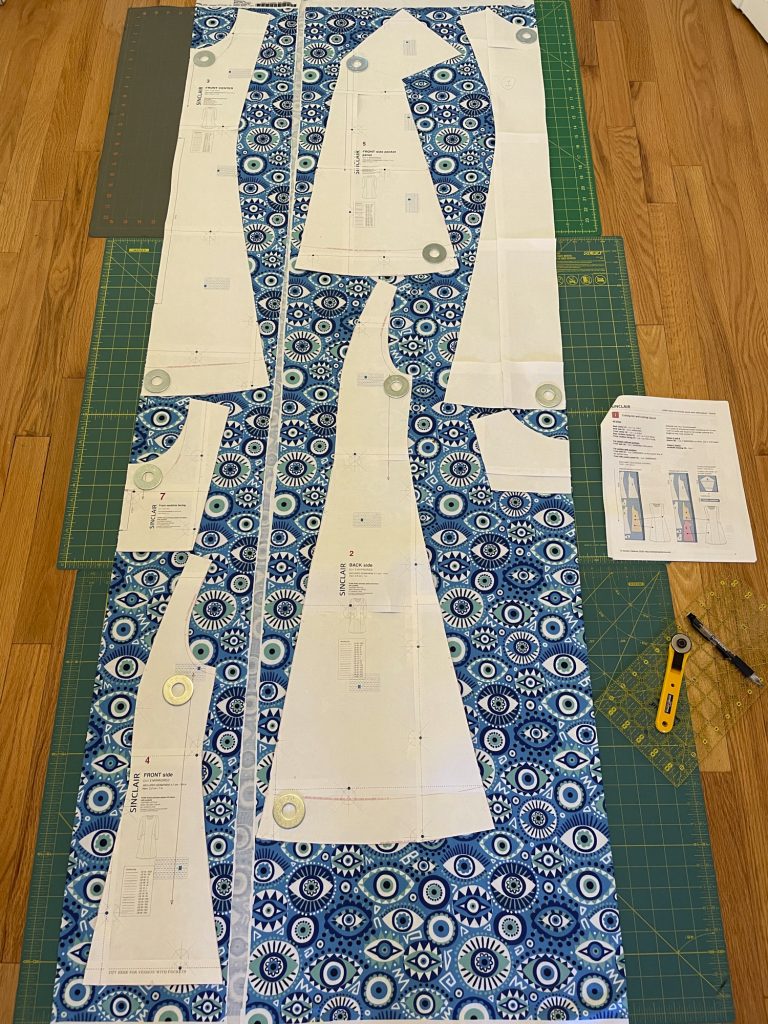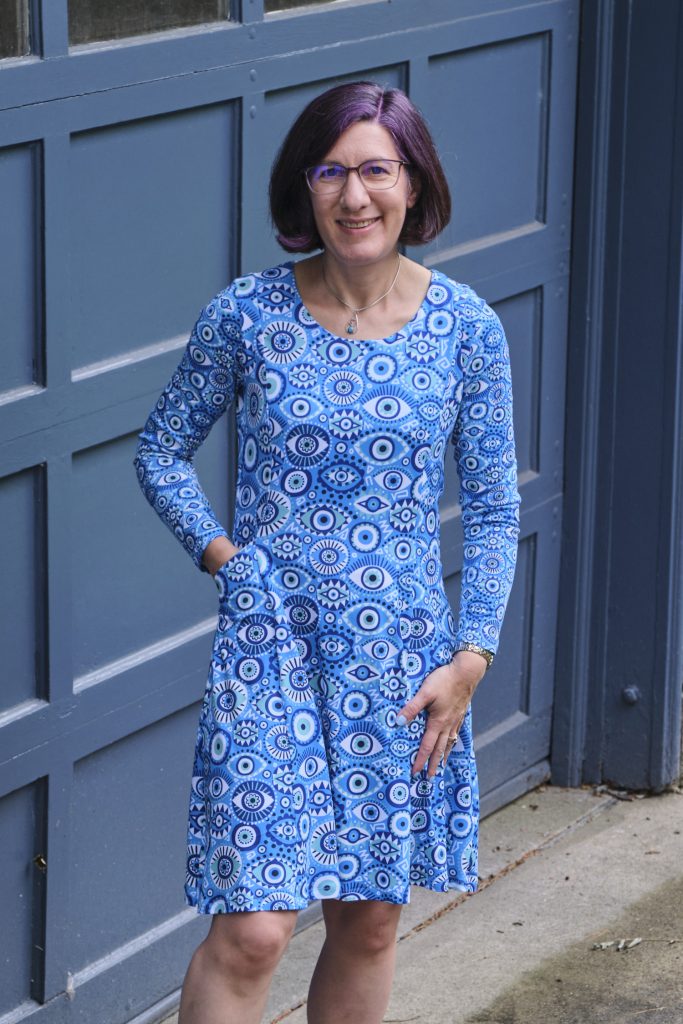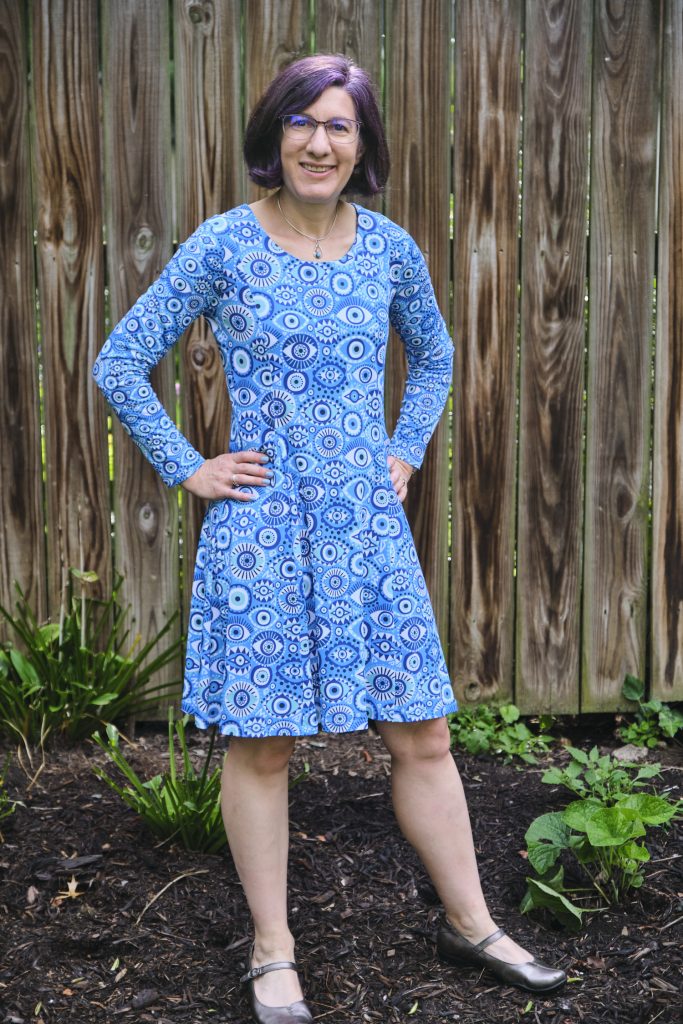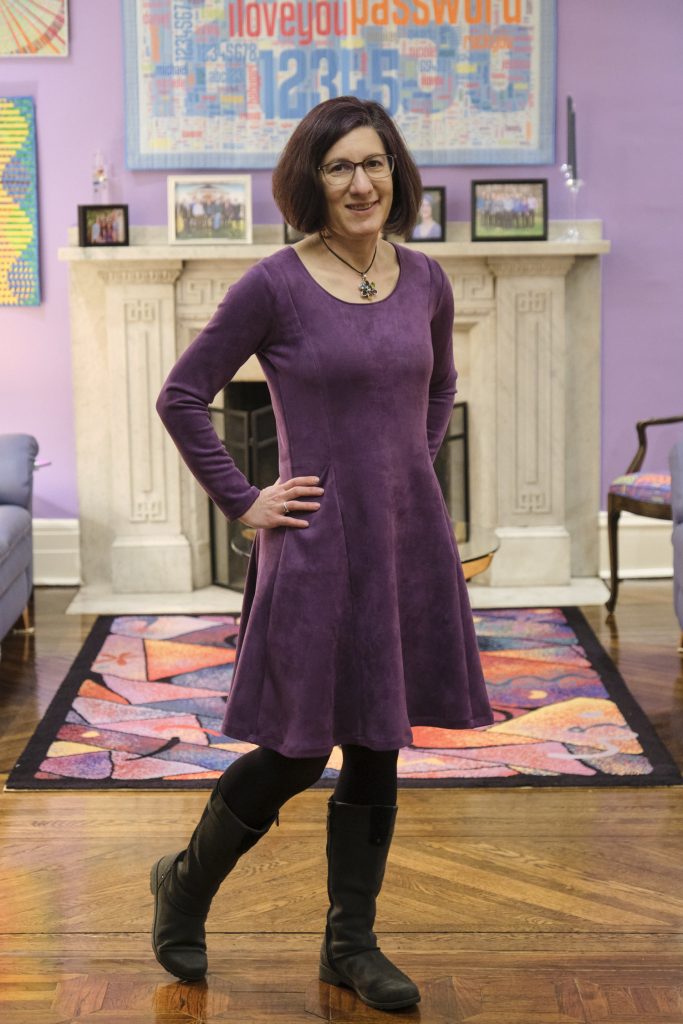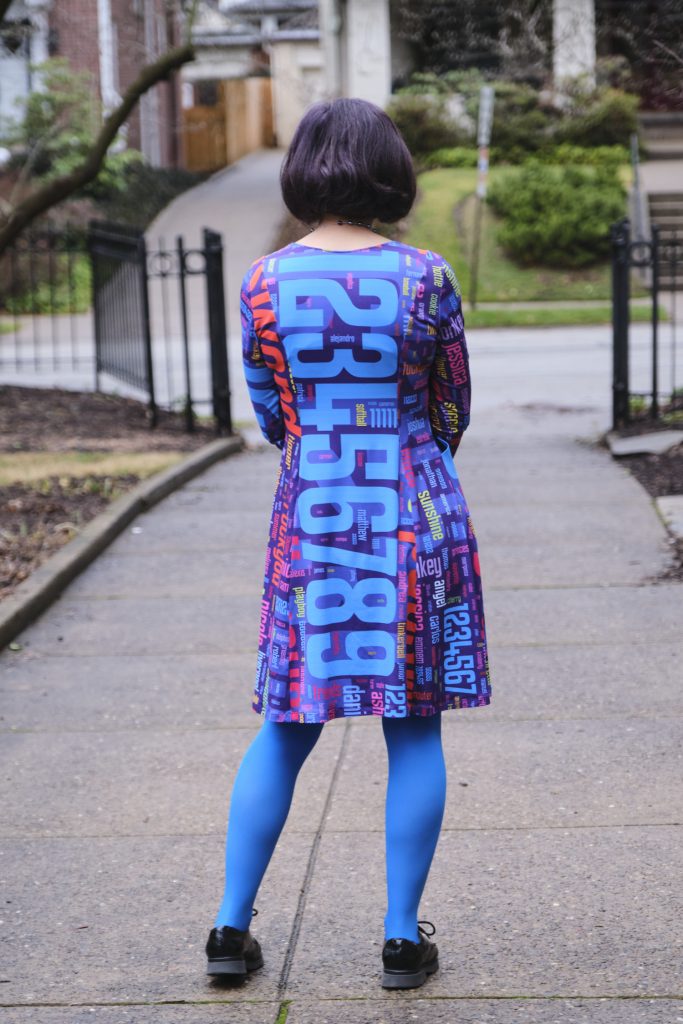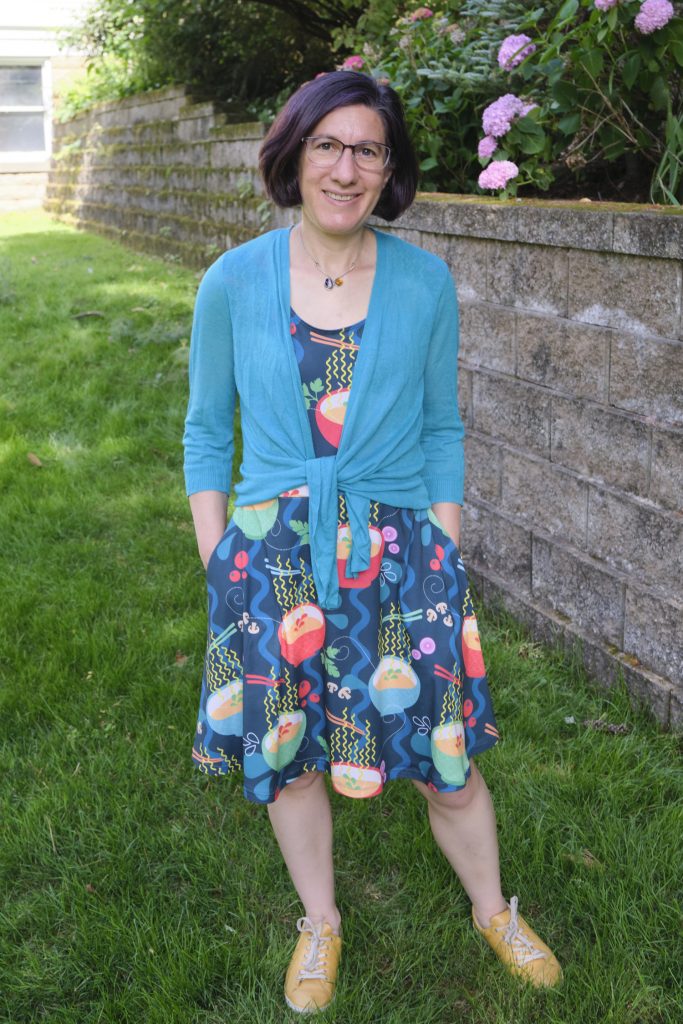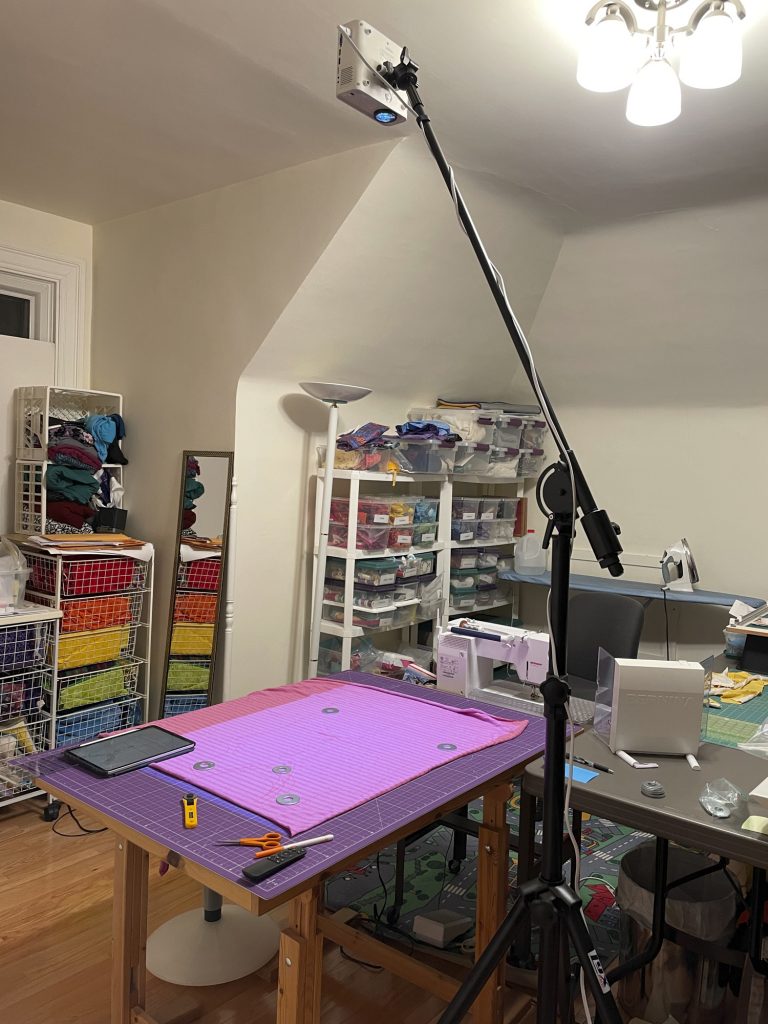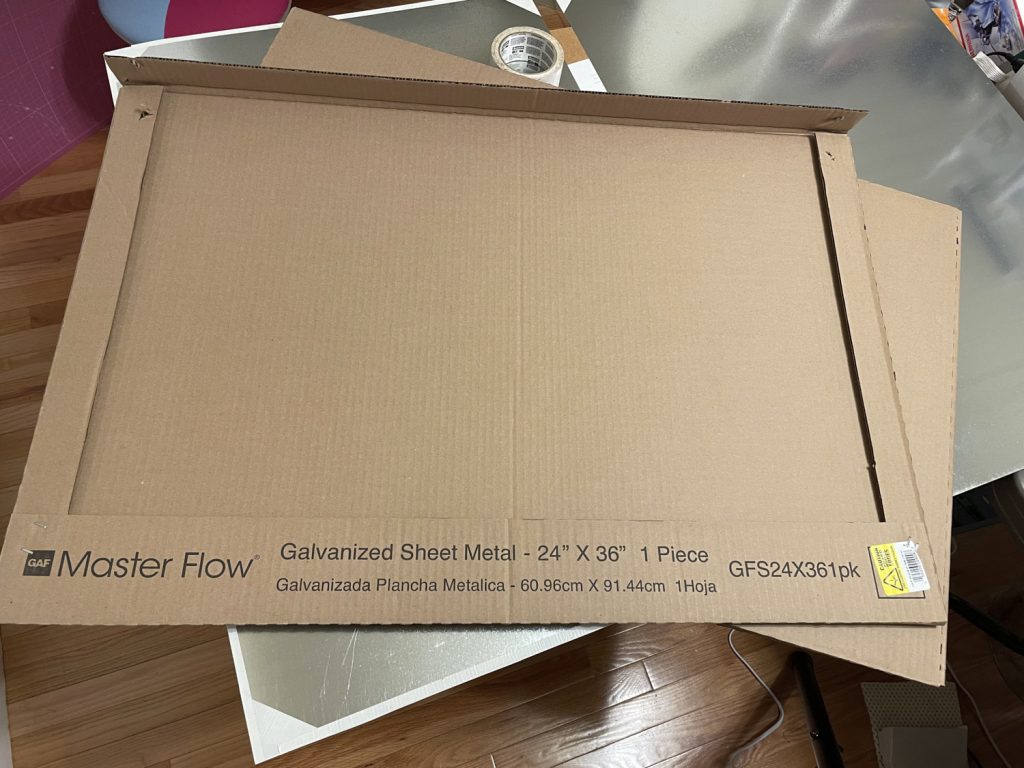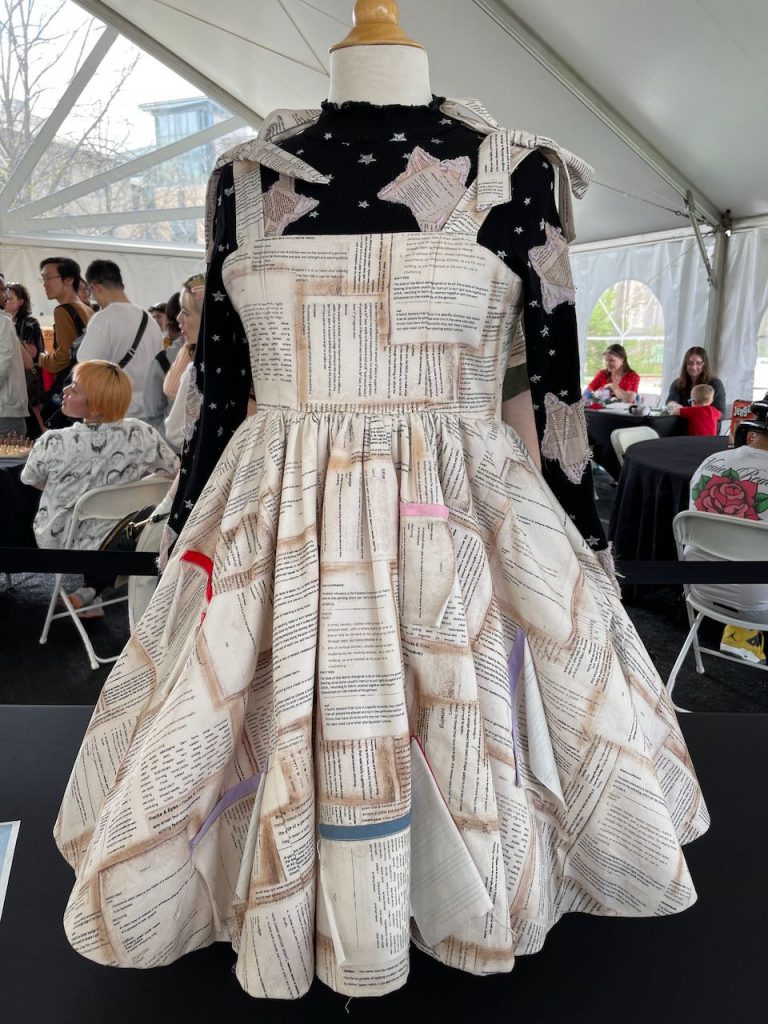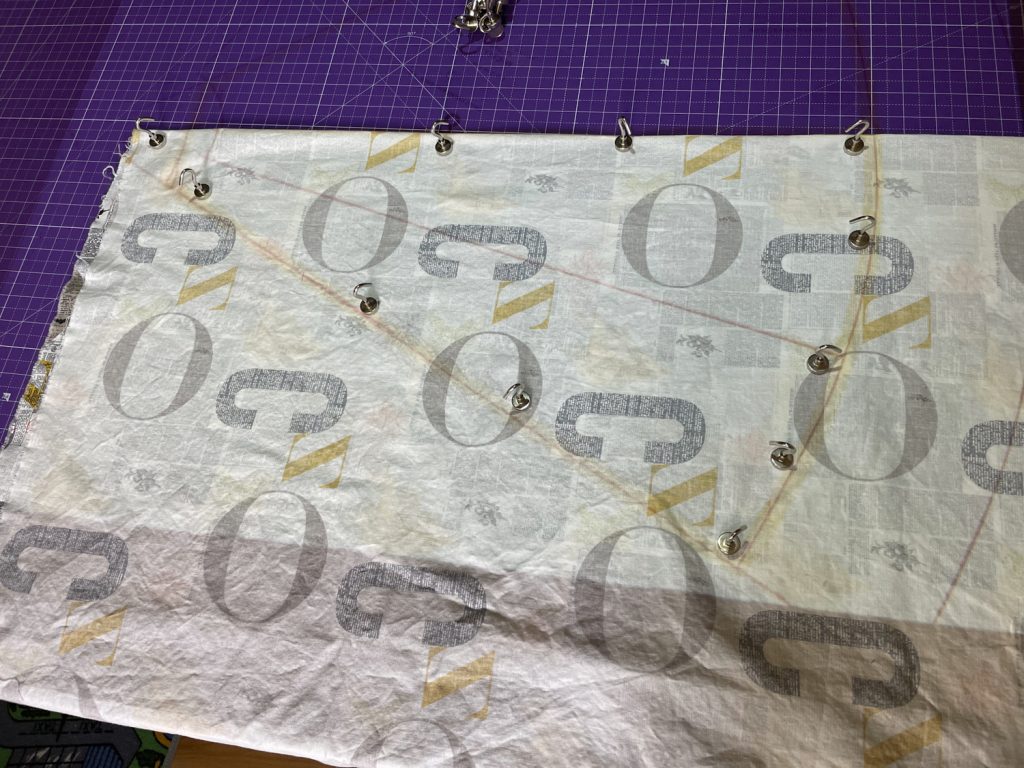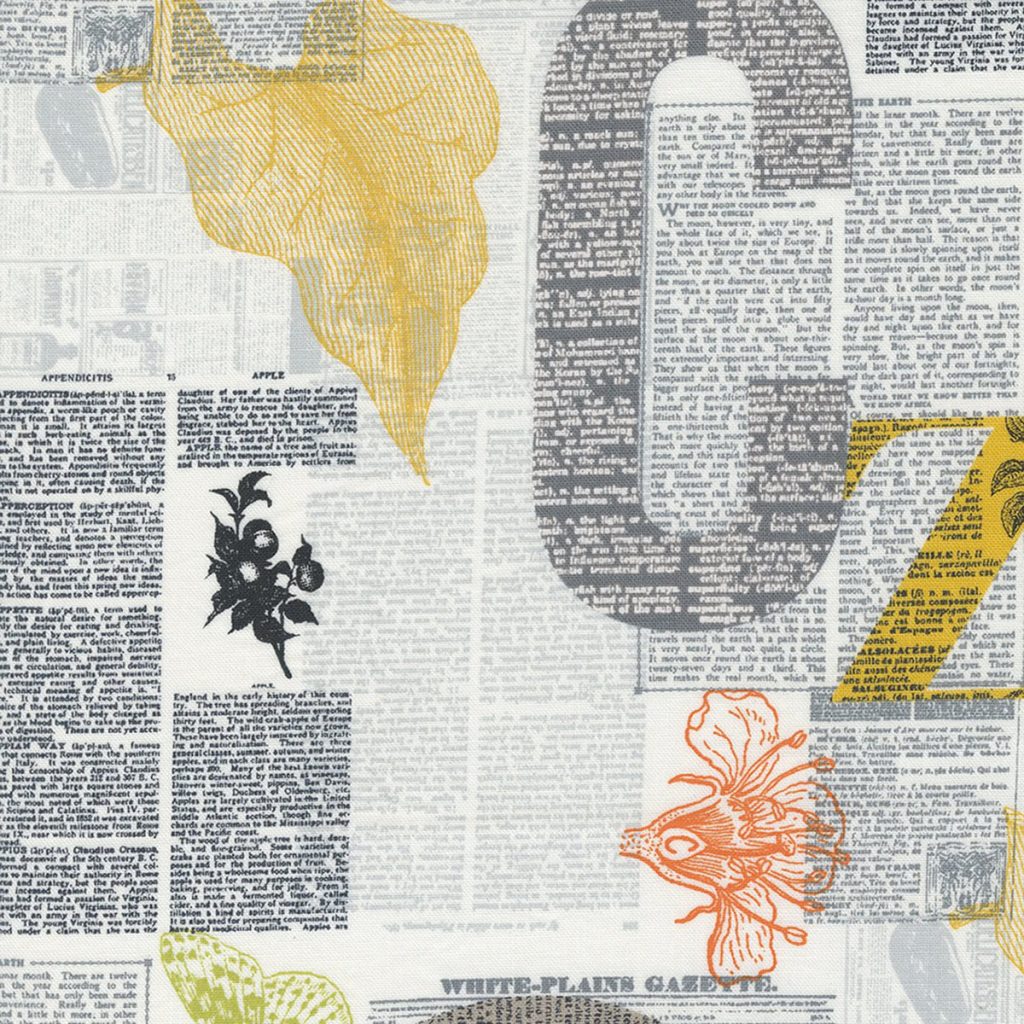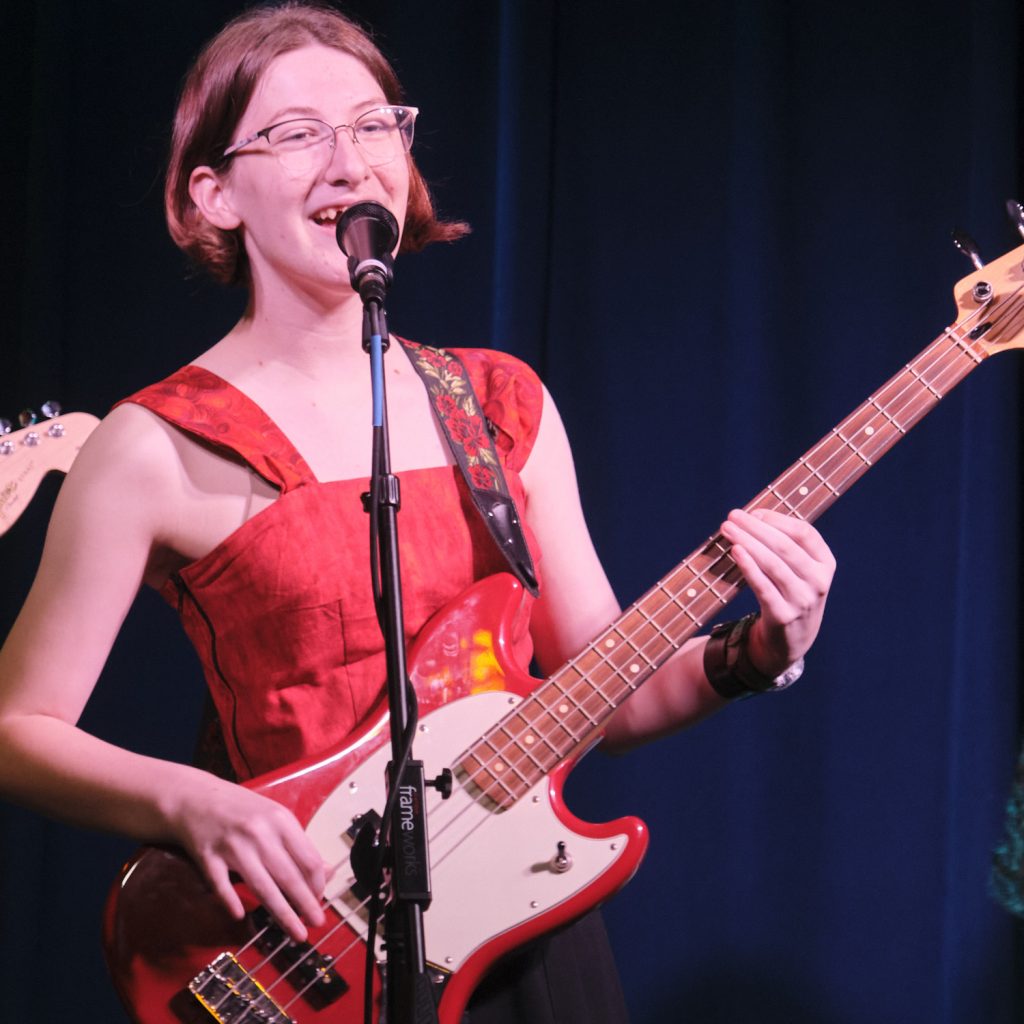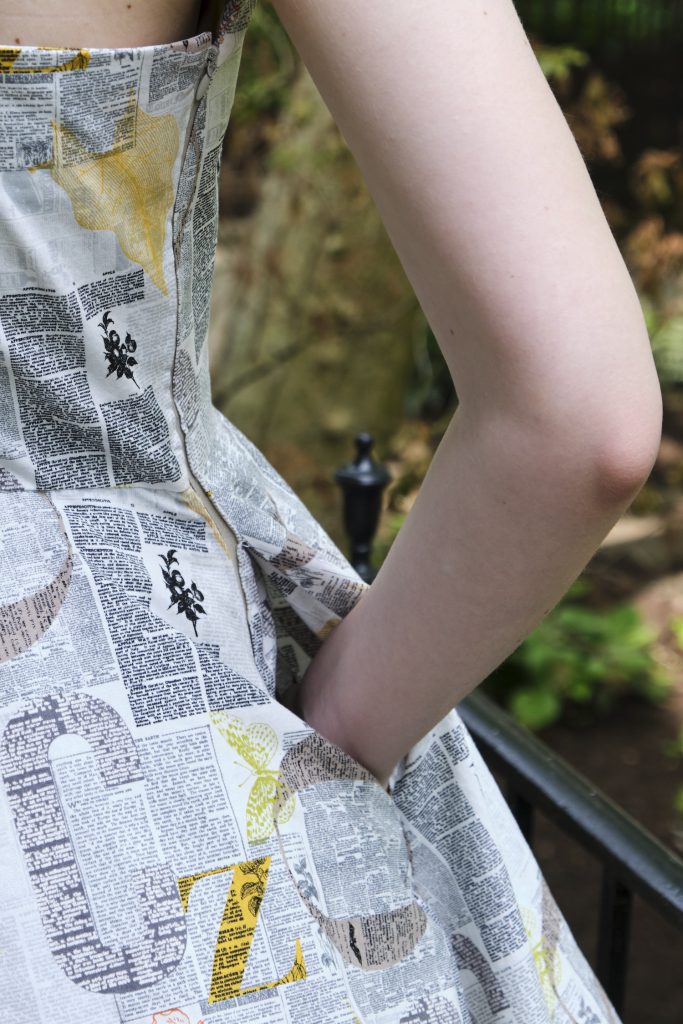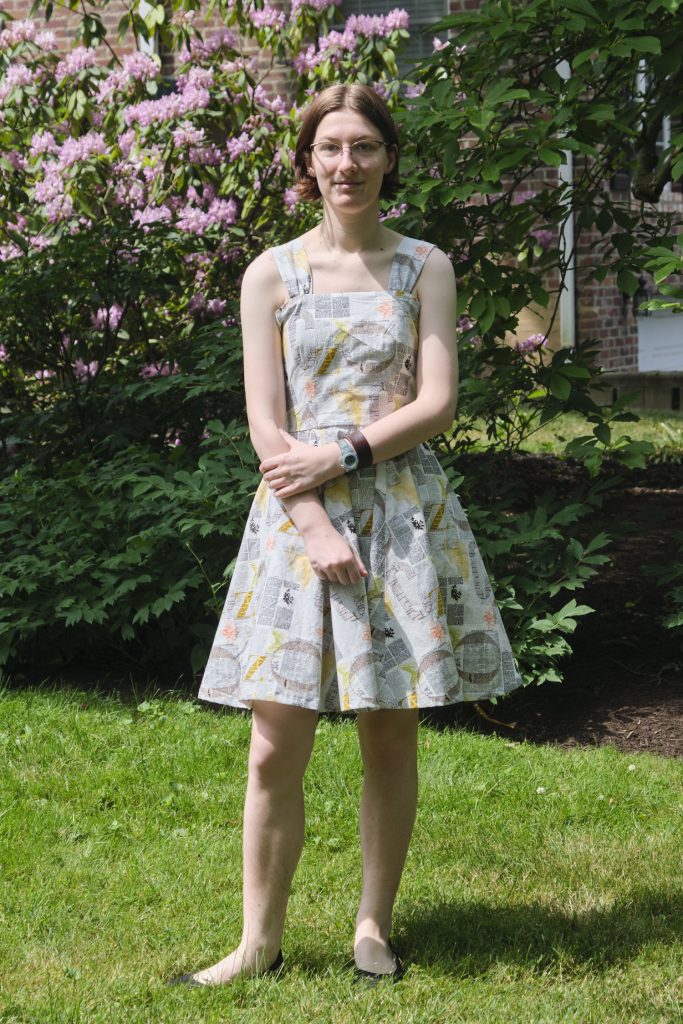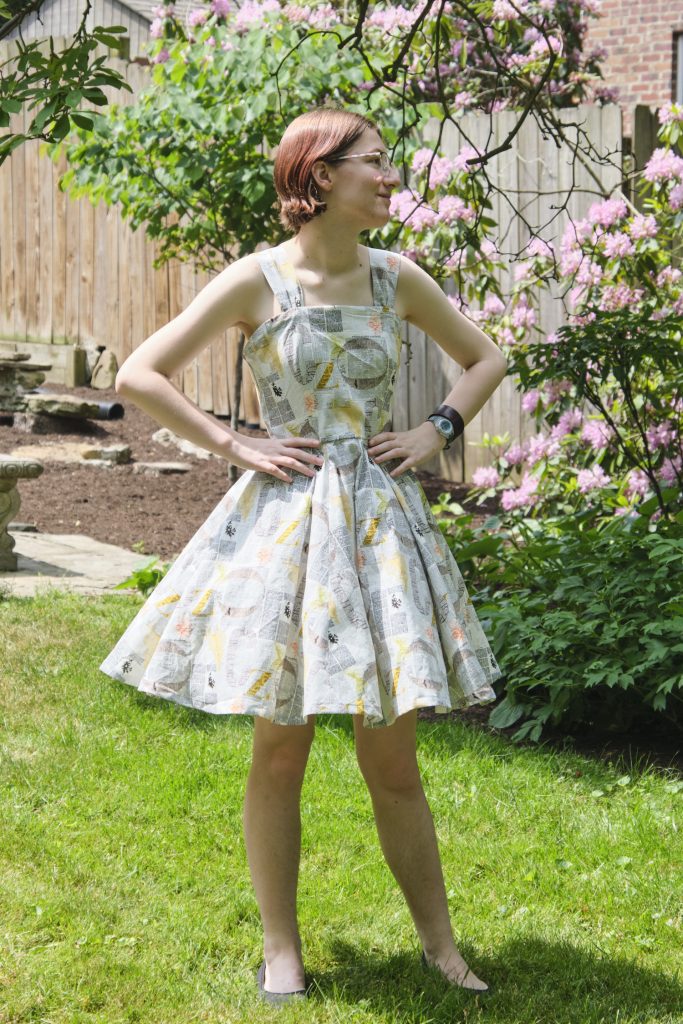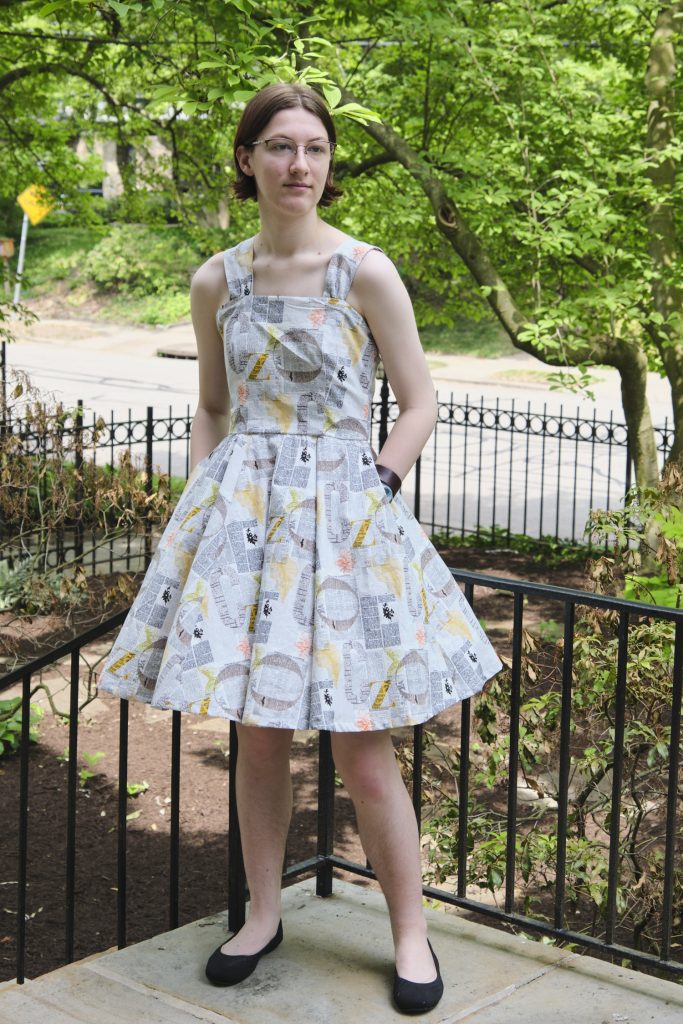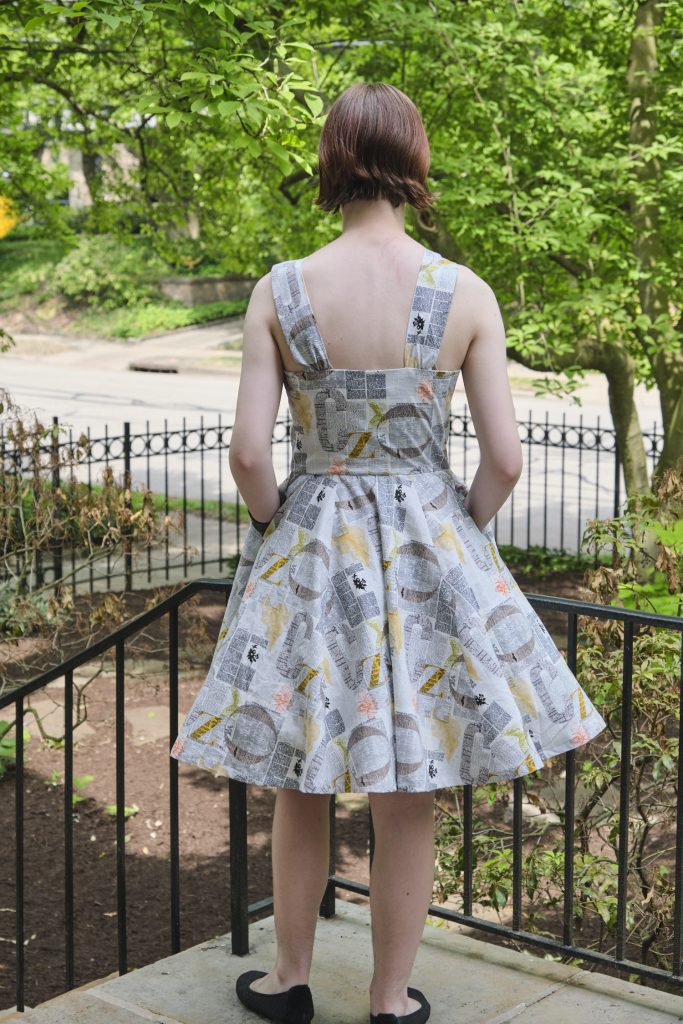In June I decided to try my first knit shorts pattern, Sinclair pattern’s Cleo knit shorts and culottes. These shorts have a comfy yoga-style waistband, optional side-seam pockets, and a full drape. I was intrigued by the comfy lounge shorts people were posting on the Sinclair Facebook group, and even more intrigued by the dressier looking long shorts and culottes. But what convinced me to purchase the pattern was the palazzo pants. This is not actually a pattern for palazzo pants, but I saw multiple sewists (especially Holly Stout and Kristi Käär) who simply took the Cleo culotte pattern, extended the side seams to pants length, and voila, lovely flowy palazzo pants. These sewists also executed and interesting pocket hack to get the pockets off the side seam.
Before cutting into 2 yards of fancy fabric for the pants, I decided to make a basic pair of soft knit shorts first so I could try out the pattern. Eighty percent of the work in making pants is in the top 20% of the pants — once you get past the waist band, pockets and crotch seam, the rest of the pants are a piece of cake.
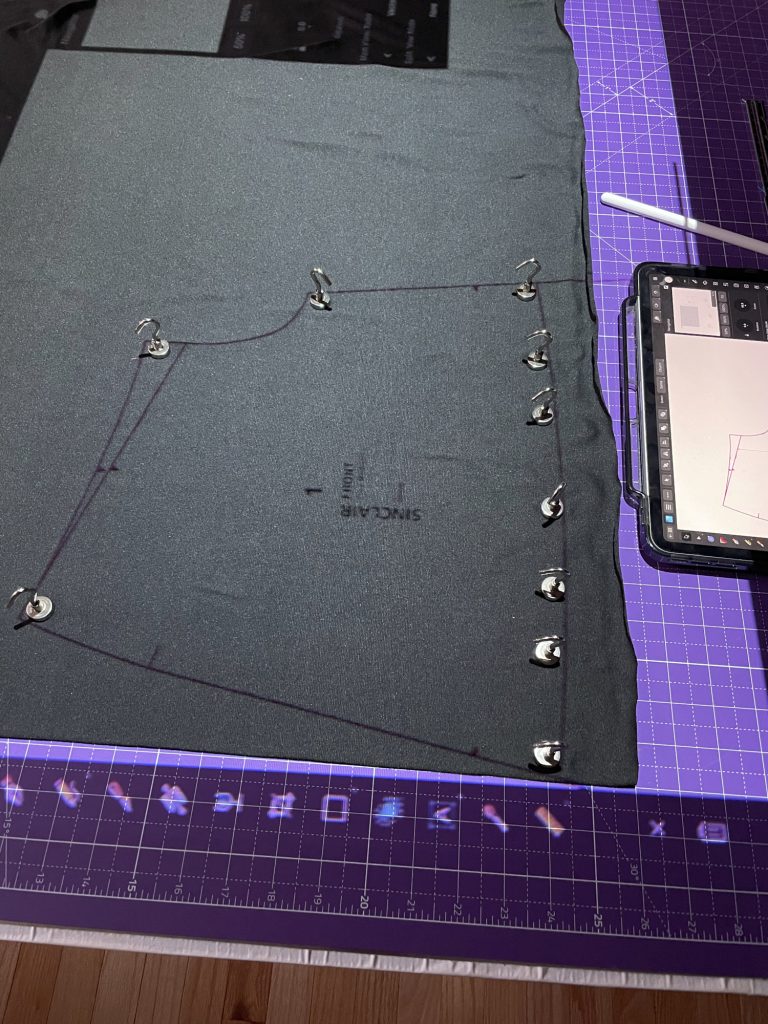
I cut my size 4 petite shorts from one yard of plain black double brushed polyester (DBP) fabric. The DBP is super soft, so soft that I was concerned about keeping the waist band in place if I put my phone in my pocket. As the pattern advised, I sandwiched a piece of stretch mesh between the two DBP layers of the waistband. The waistband also has 1/4 inch elastic at the top, but that doesn’t provide a lot of support. Shorts construction was fairly straightforward, although as predicted most of the effort was in the pockets and waistband. The results look nice and are super comfy (will be great for PJs), but do sag when I load up my pockets. I also personally prefer shorts and pants with more of a high rise.
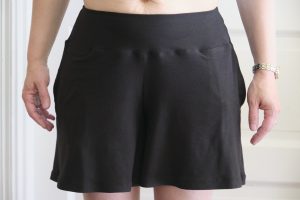
I decided to alter the pattern a bit before attempting pants from a two yards of a lavender DBP floral print. I thought I might be able to get a higher rise by using the regular size pattern rather than the petite, but I checked and the rise was the same. I checked the tall pattern and saw the rise was about 3/4 inch taller. So I used the size 4 tall as my base and then added about half an inch to the top of the front and back leg pieces (drafting the alterations in Affinity Designer).
After debating a variety of solutions to the waistband sag problem, I narrowed the waistband by half an inch on the left and right side of both the front and back (subtracting 2 inches total from the diameter) in order to tighten it up. Instead of sandwiching stretch mesh in the waistband, I used a medium-weight cotton lycra for the waistband lining, providing more support than you get from DBP. I considered using wider elastic but stuck with the recommended 1/4 inch braided elastic. The result is a much more supportive and less saggy waist band than on the shorts. They still sag a little when my pockets are loaded, but not as much. I’m going to look for a more supportive athletic knit or possibly try wider elastic to see if I can make future pants even better.
While Holly and Kristi borrowed their pocket design from other Sinclair patterns that I don’t have (yet), I found an online tutorial on making slash pockets and just drafted my own, with a very slightly sloping slash. I found the slash pockets actually easier to construct than the side-seam pockets because you don’t have to deal with the awkward part where you sew the side seam just up to the pocket opening and stop.
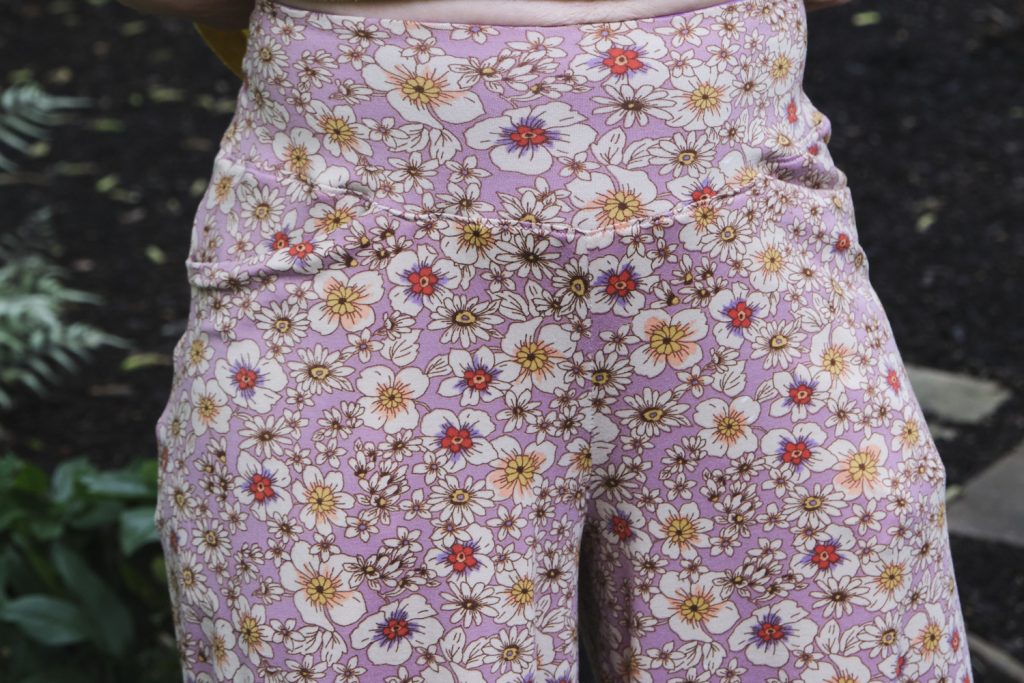
Finally, I extended the inseam and outside seam on the legs to full pants length, keeping the same angles. The width at the bottom hem is about 26″. (I used HeatNBond Soft Stretch on the hem and zigzagged over the edge.) At 5’2″, I can just barely get full length wide-leg pants out of two yards of fabric.
The finished results (see pants modeled blow with my Cachet top and Laura cardigan) are fantastic light-weight swishy pants for summer. They are quite comfortable with pockets that easily accommodate a cell phone and small wallet. I’m eager to make more in other knit fabrics, and also try curving the outside seam at the hips so that the legs are straight and not quite so wide for another look.
